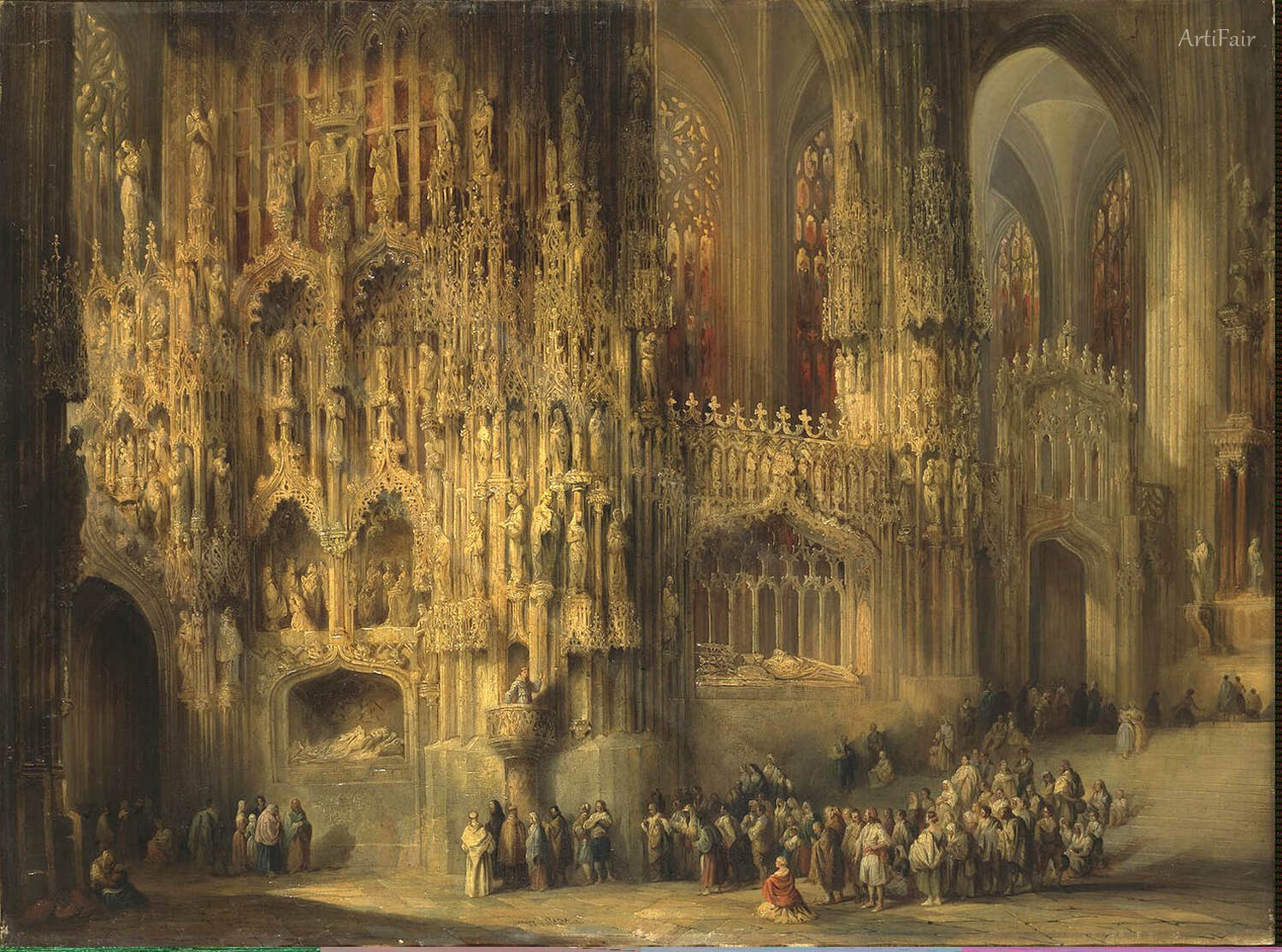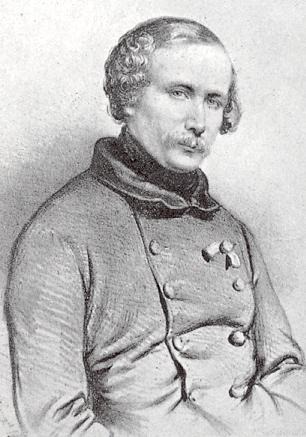

Jenaro Pérez Villaamil
ES
60
Artworks
1807 - 1854
Lifespan
Artist Biography
Jenaro Pérez Villaamil y d'Huguet (1807-1854) stands as the foremost figure in Spanish Romantic landscape painting, a prolific artist whose work captured the monumental and picturesque essence of Spain and beyond. Born in Ferrol, Galicia, on February 3, 1807, Villaamil's early life was intertwined with military pursuits. He enrolled at the military academy in Santiago de Compostela, where his father taught, and later pursued literary studies in Madrid. However, his trajectory shifted dramatically in 1823 when, after fighting against absolutist troops and being wounded, he was taken as a prisoner of war to Cádiz. It was here, amidst adversity, that his artistic inclinations truly began to flourish, leading him to study at the Escuela de Bellas Artes de Cádiz and embark on a career that would redefine landscape painting in Spain.
The early 1830s marked a significant period of development and travel for Pérez Villaamil. From 1830 to 1833, accompanied by his brother Juan, also a painter, he ventured to San Juan, Puerto Rico. There, they undertook the decoration of the Teatro Tapia, working as scenographers and honing their artistic skills in a new environment. Upon his return to Spain in 1833, a pivotal encounter in Seville with the renowned Scottish painter David Roberts proved transformative. Roberts, a master of the British Romantic landscape style, exerted a decisive influence on Villaamil, shaping his approach to composition, light, and the depiction of architectural grandeur, a style he would passionately pursue for the remainder of his career.
Settling in Madrid in 1834, Pérez Villaamil rapidly integrated into the vibrant artistic milieu of the Romantic era, his talent gaining increasing recognition. The following year, in 1835, he was elected an honorary member of the prestigious Real Academia de Bellas Artes de San Fernando in the field of landscape painting. An active participant in the cultural life of the capital, he was among the founders of the Liceo Artístico y Literario Español in 1837, where he later held significant teaching and administrative roles. His rising stature was further solidified in 1840 when he was appointed honorary court painter to Queen Isabella II, producing spectacular landscapes and monumental interiors for the royal collection.
The politically turbulent period of General Espartero's Regency (1840-1844) saw Pérez Villaamil in self-imposed exile, primarily in France and Belgium, ostensibly for artistic affairs. This period abroad was immensely productive. He travelled extensively through Europe, undertaking commissions for sovereigns and associating with key political and cultural figures. Crucially, it was during this time, in Paris (1842-1843), that he published his magnum opus, "España artística y monumental." This lavishly illustrated book, featuring lithographs based largely on his own drawings with texts by Patricio de la Escosura, became one of the most beautiful and influential travel books of Spanish Romanticism, showcasing Spain's monumental heritage. His international acclaim grew, earning him the Légion d'honneur from King Louis-Philippe of France and making him a Knight of the Order of Leopold of Belgium.
Upon his return to Madrid in 1844, following the fall of Espartero, Pérez Villaamil resumed his prominent role in the Spanish art world. In 1845, he was appointed Lieutenant Director and Professor of Landscape at the Real Academia de San Fernando, later becoming its director. From 1848, he also taught landscape painting at the Escuela Preparatoria de Ingenieros Civiles y Arquitectos. His mature artistic style was characterized by a captivating blend of fantasy and observation. He often inflated the scale of buildings to enhance their impressiveness, employing warm, brilliant, golden-toned palettes and a vaporous atmosphere that enveloped objects and softened distances. His oil paintings, typically of small to medium size, displayed strong drawing and a vigorous impasto technique. A magnificent watercolourist and a fluent draughtsman, his sketches were noted for their elegance and strength. His work received high praise internationally, notably from Charles Baudelaire at the Paris Salon of 1846.
Jenaro Pérez Villaamil's prolific output, encompassing a vast number of paintings, watercolours, and sketches, primarily focused on panoramic views of monuments, cities, and natural landscapes. These were not mere topographical records but were transformed by his romantic imagination to achieve spectacular and grandiose effects, imbued with a distinct decorative sense. Yet, they retained a descriptive quality learned from Roberts, capturing the spirit of the travelling artist. Until 1852, he continued to travel extensively across Spain, seeking new vistas. Sadly, his brilliant career was cut short by liver disease, and he died in Madrid on June 5, 1854, at the age of forty-seven. Pérez Villaamil left an indelible legacy, initiating the systematic cultivation of landscape painting in Spain and solidifying his place as its most important Romantic master in the genre.